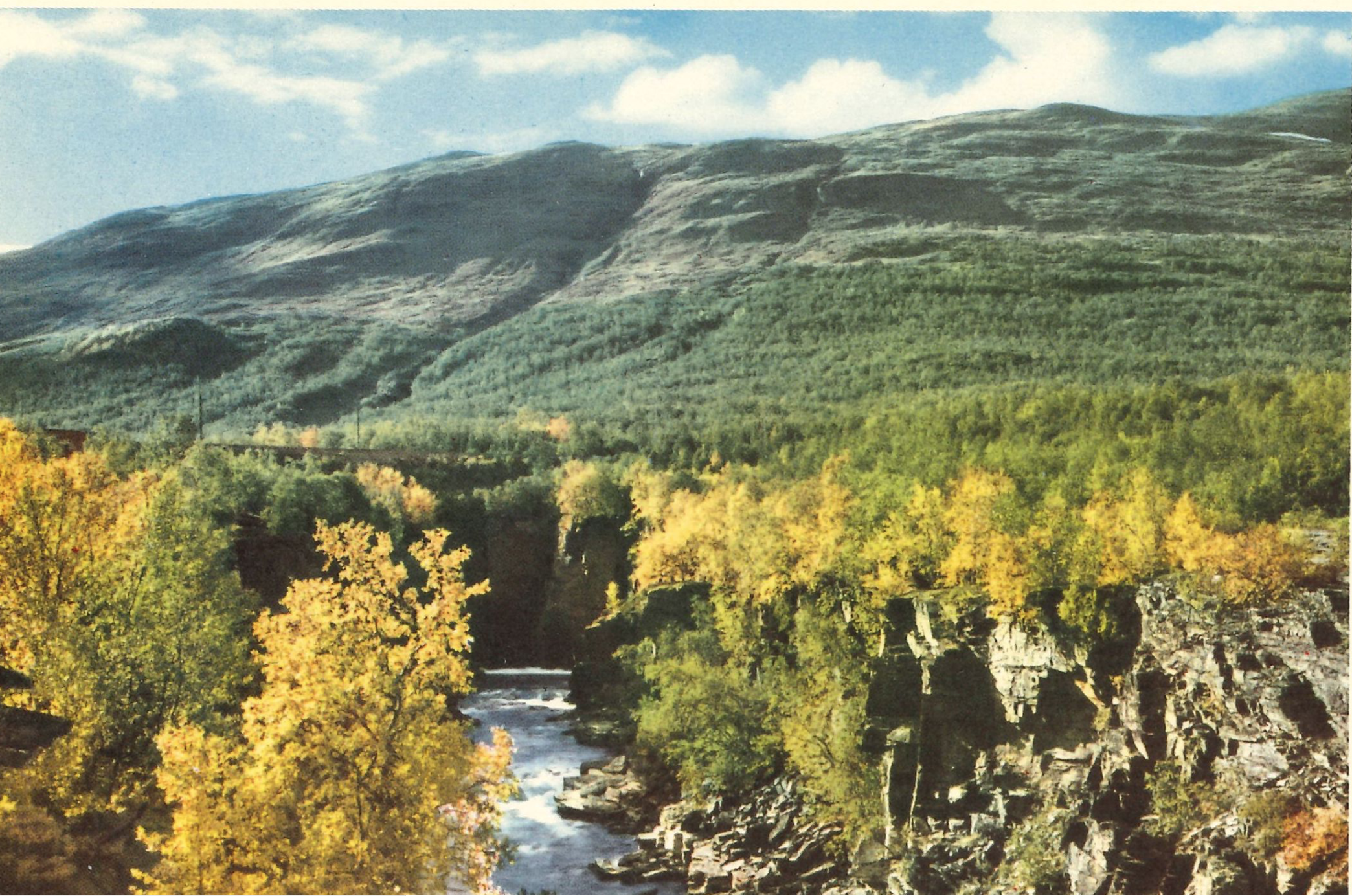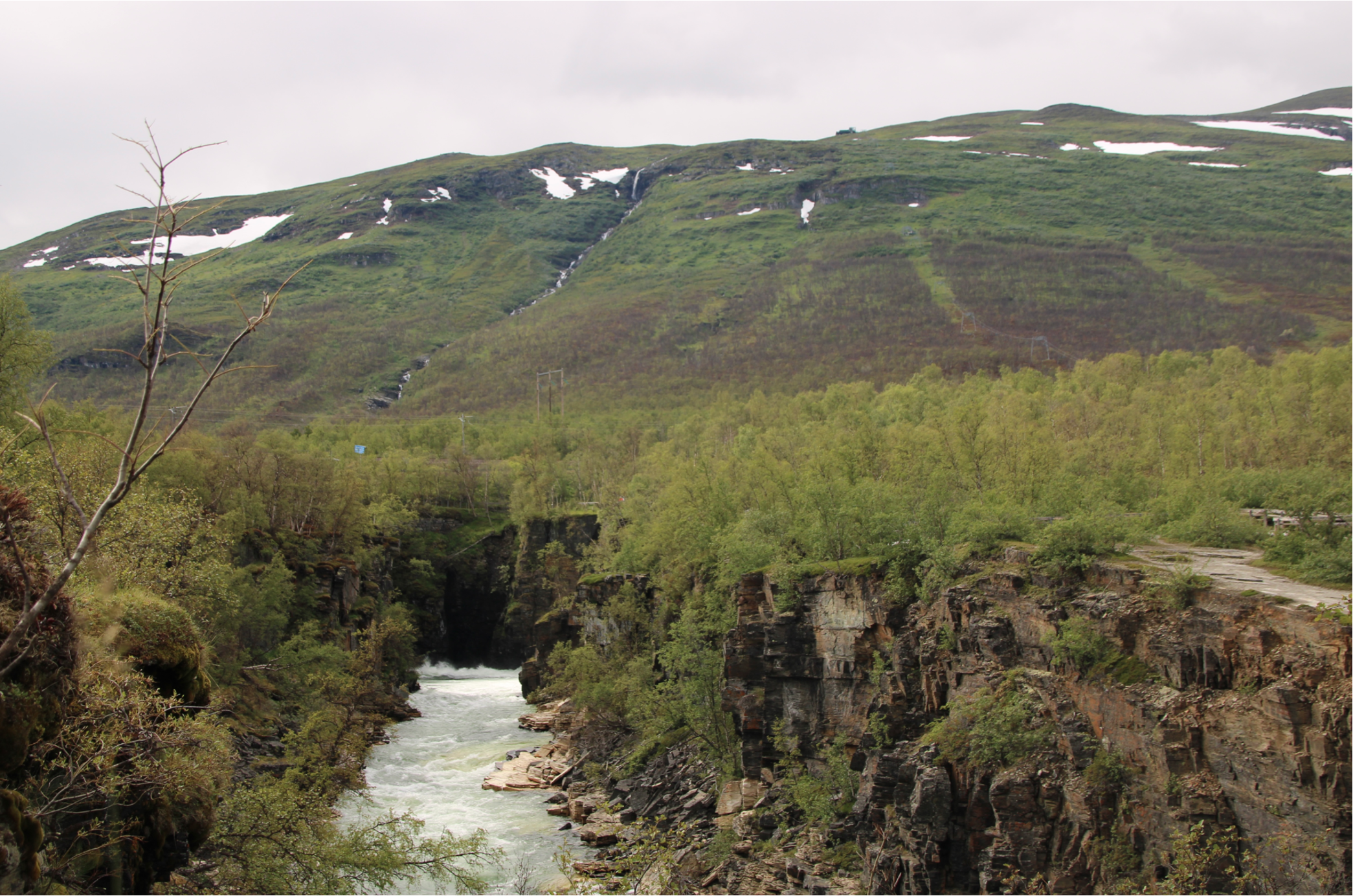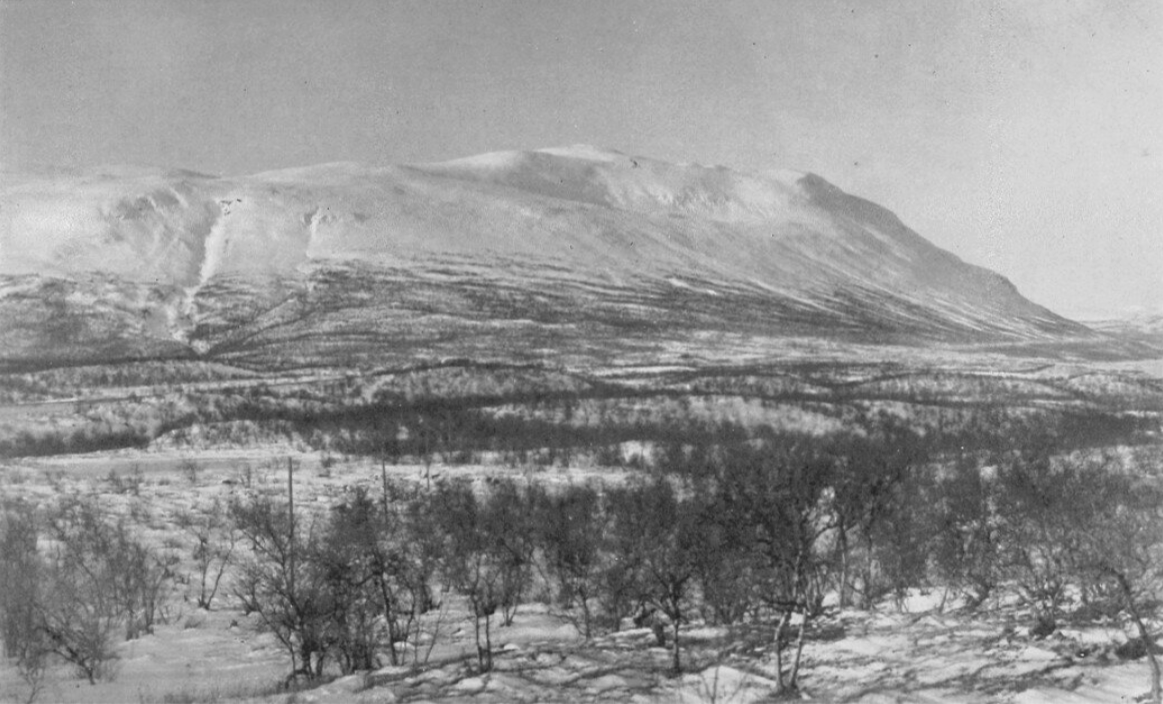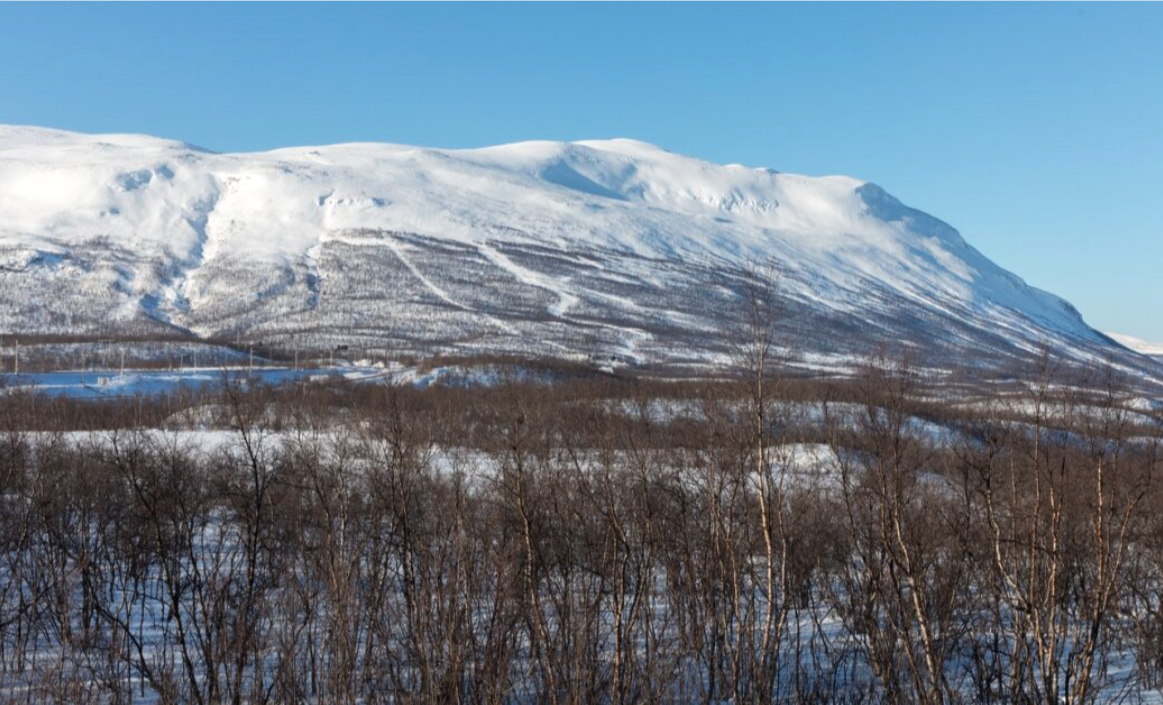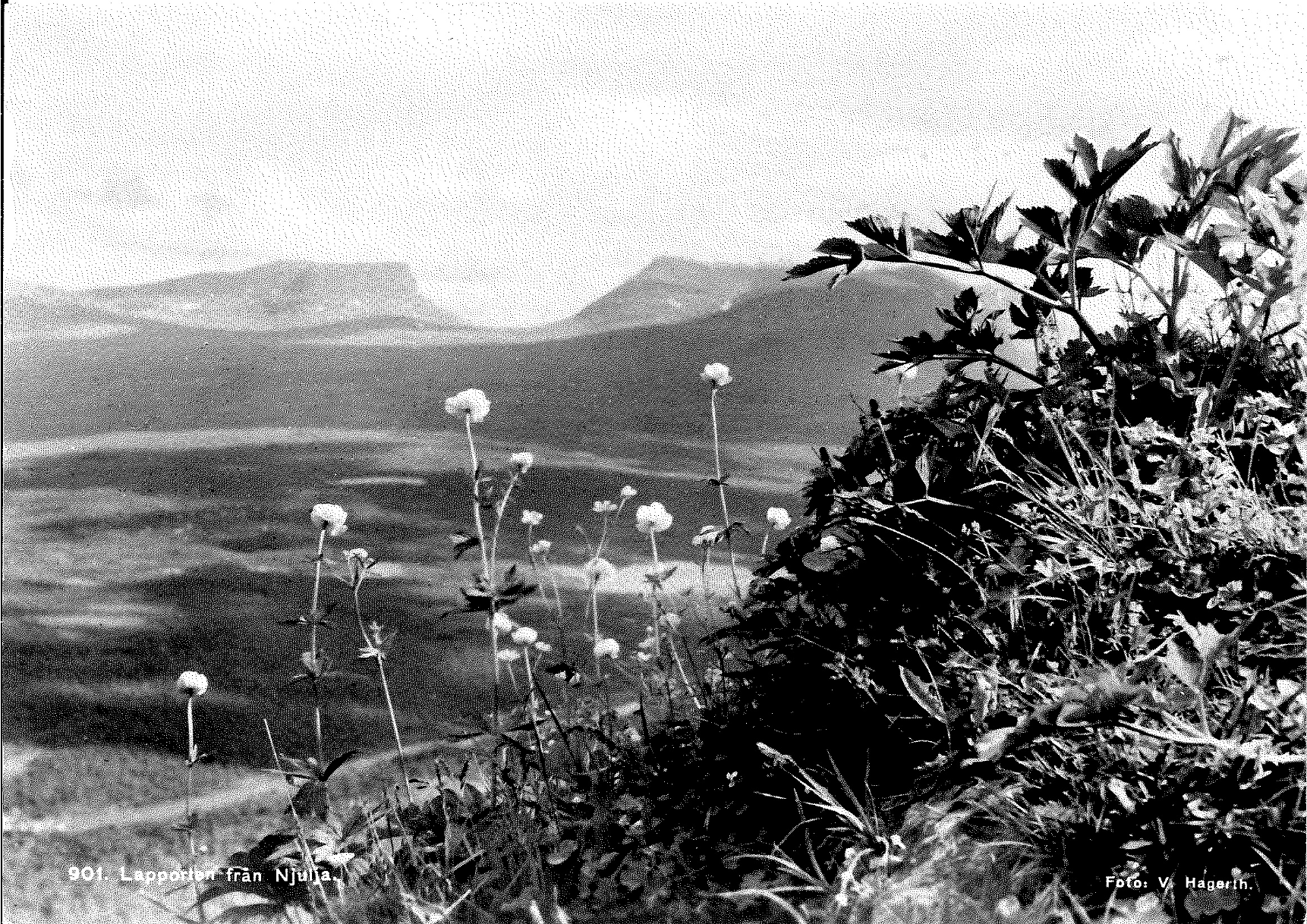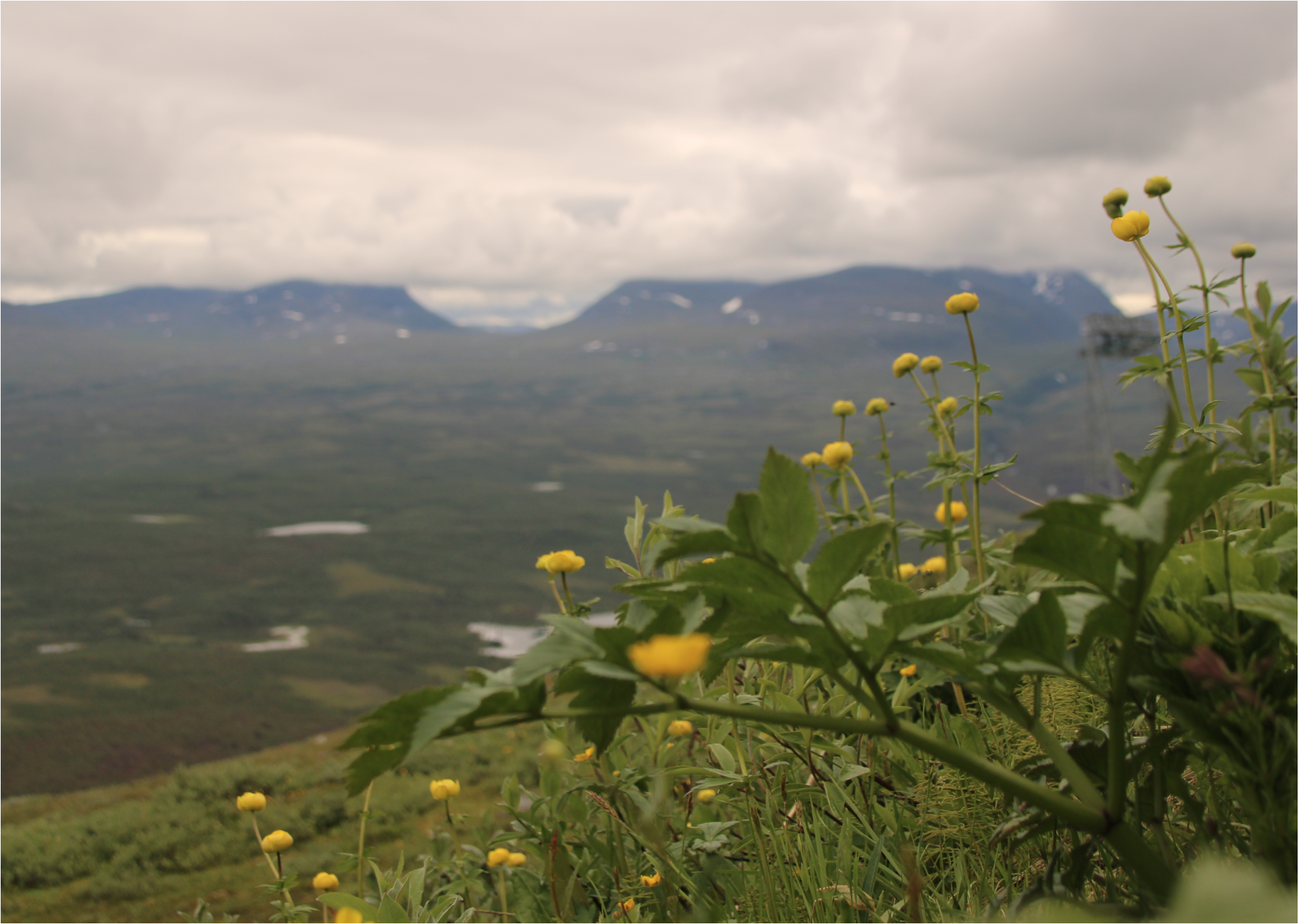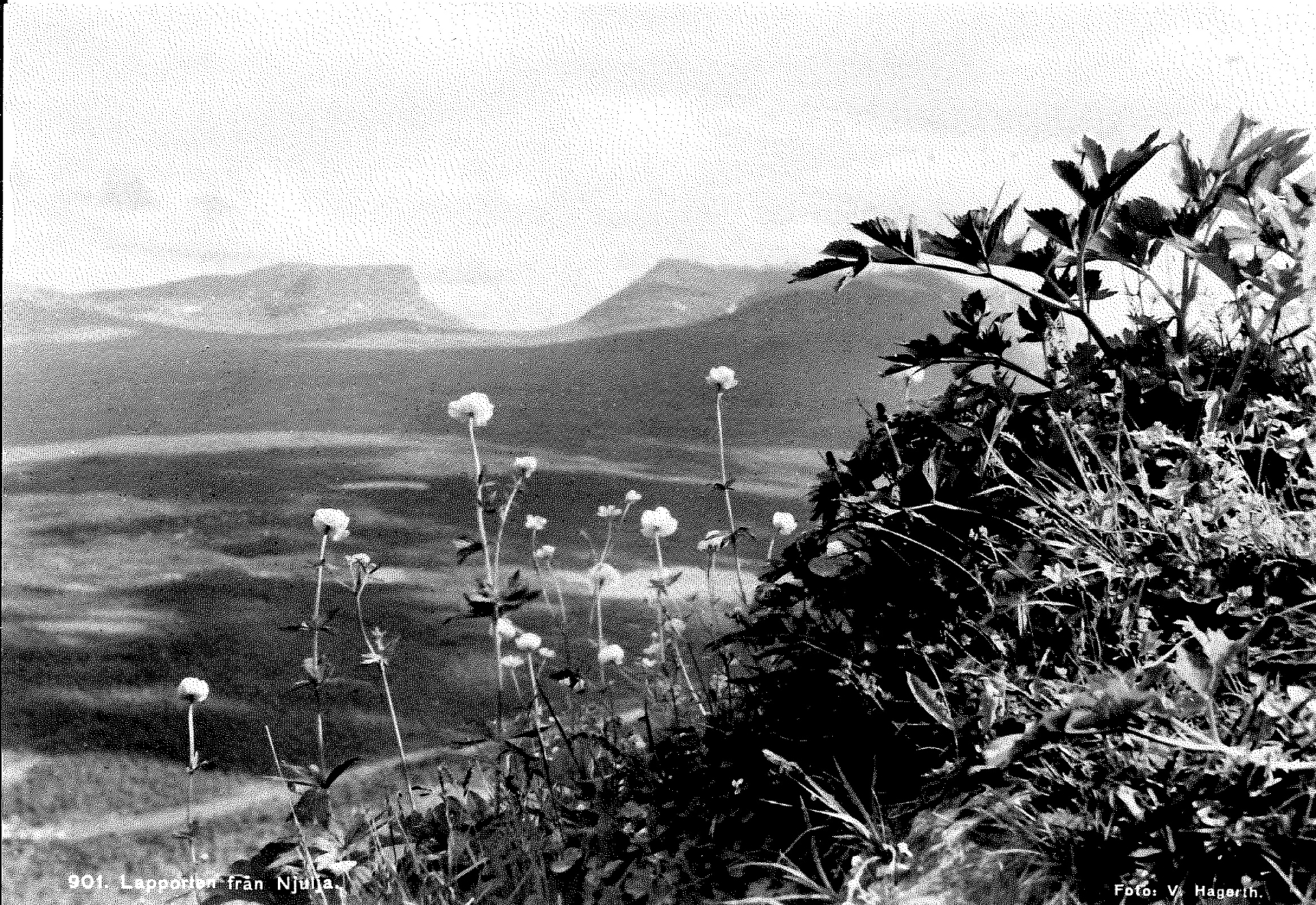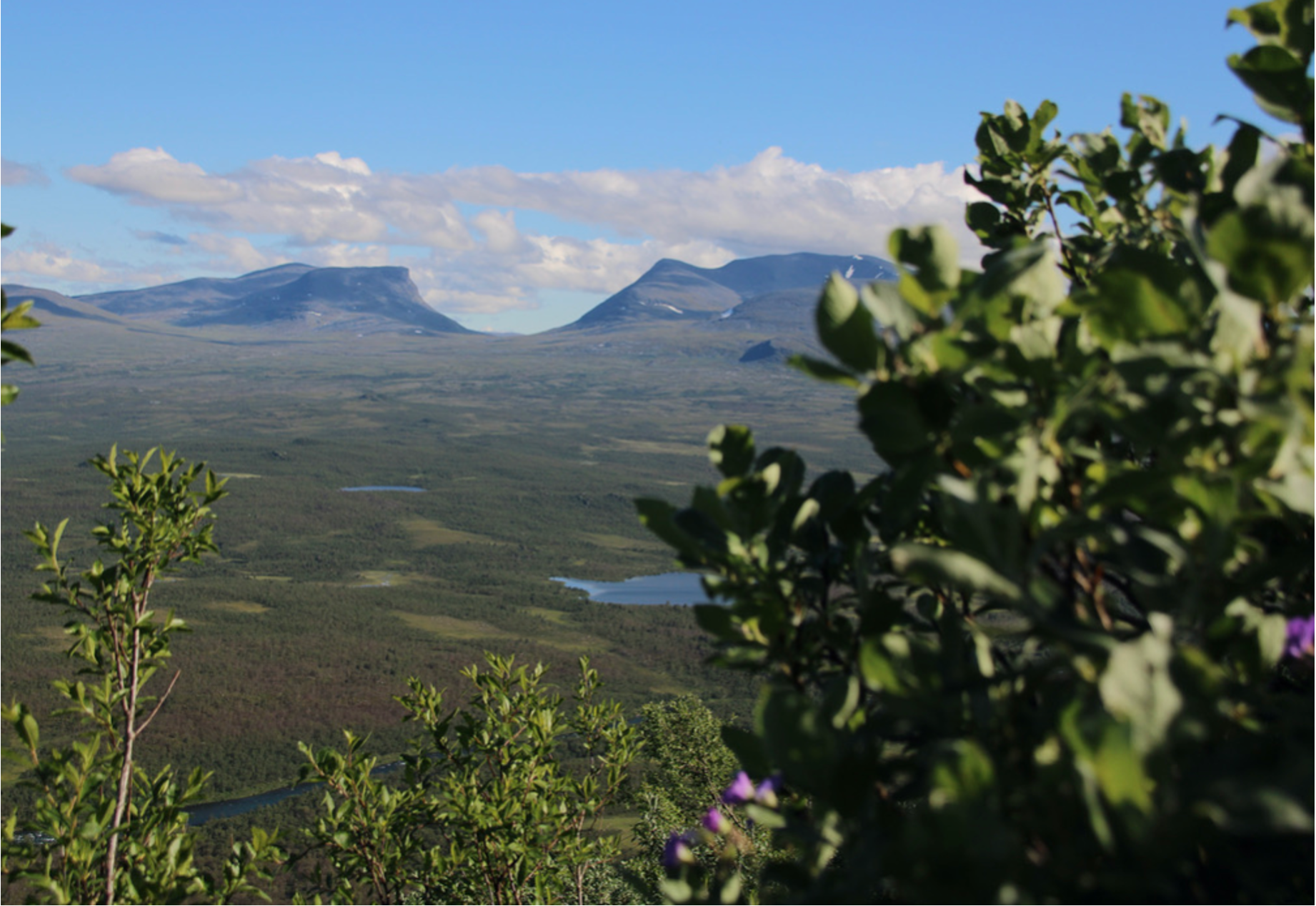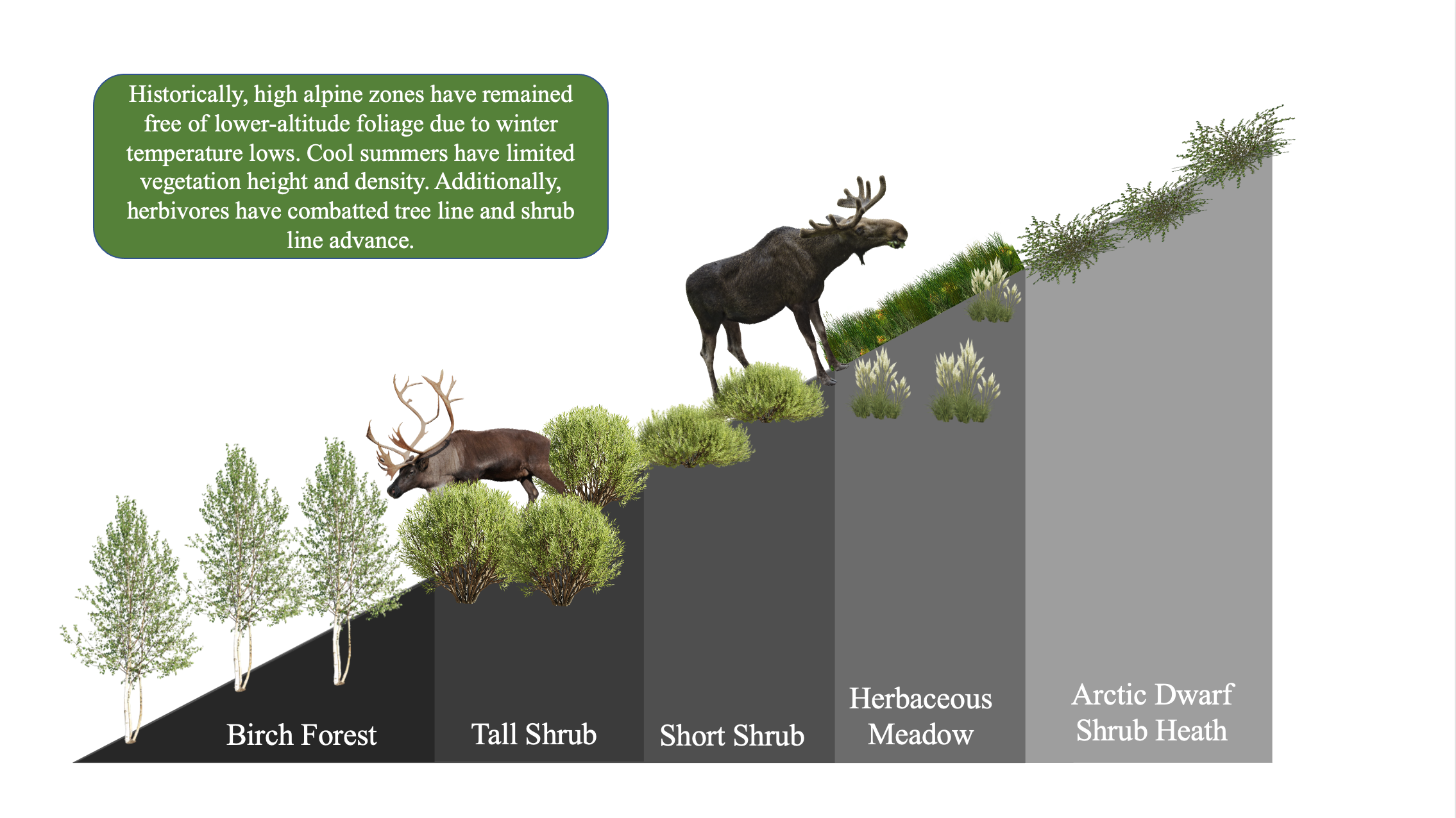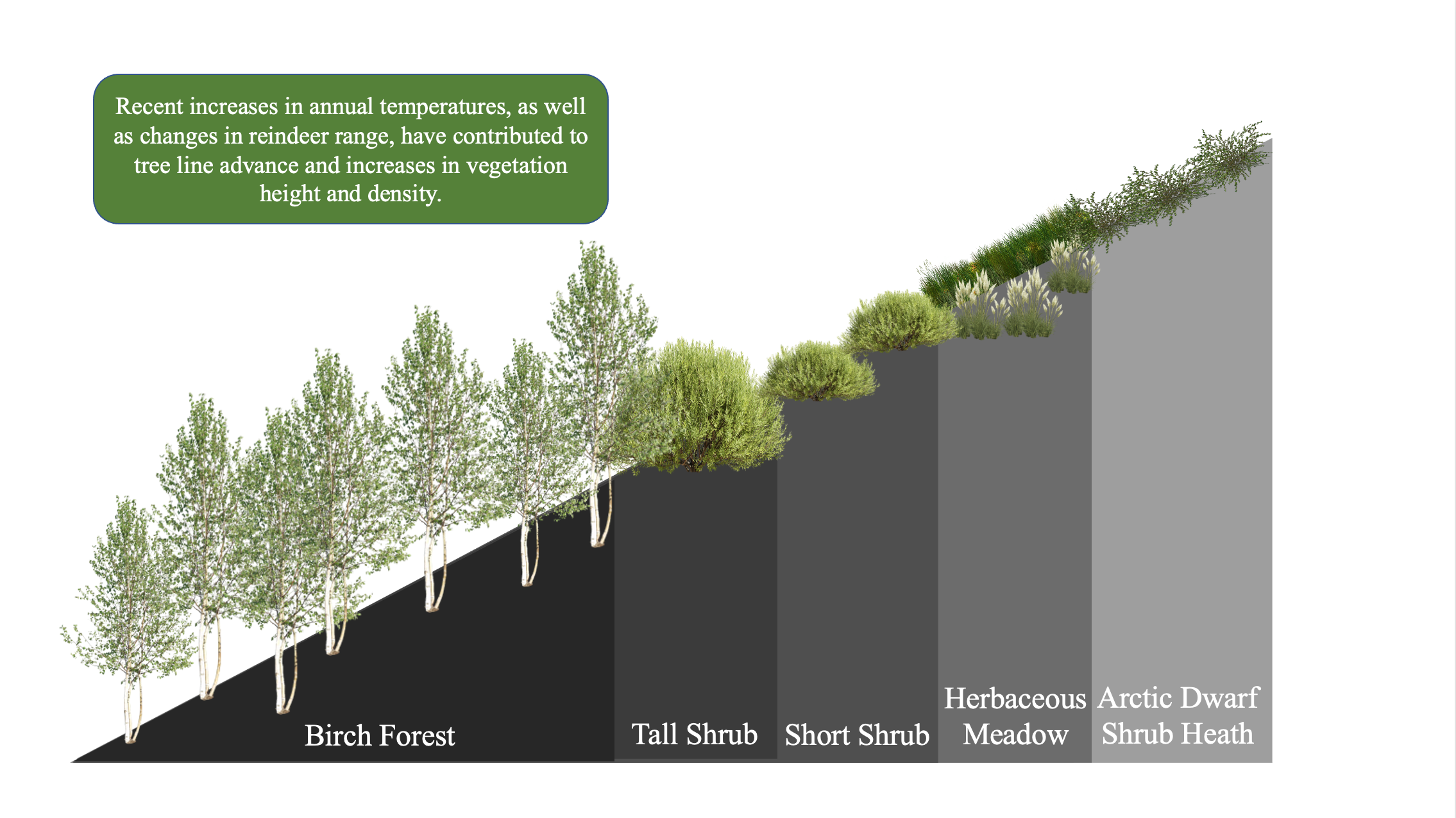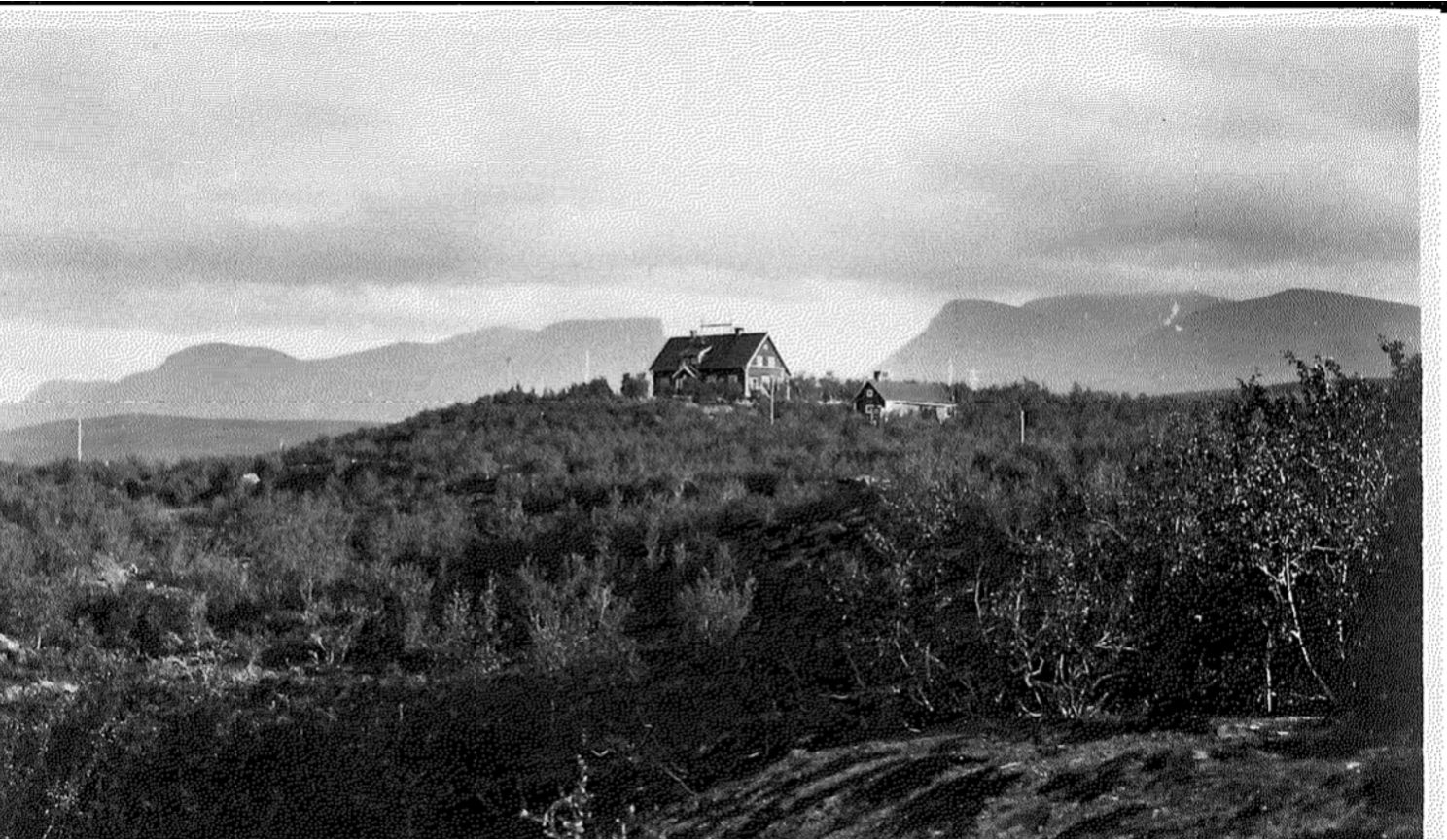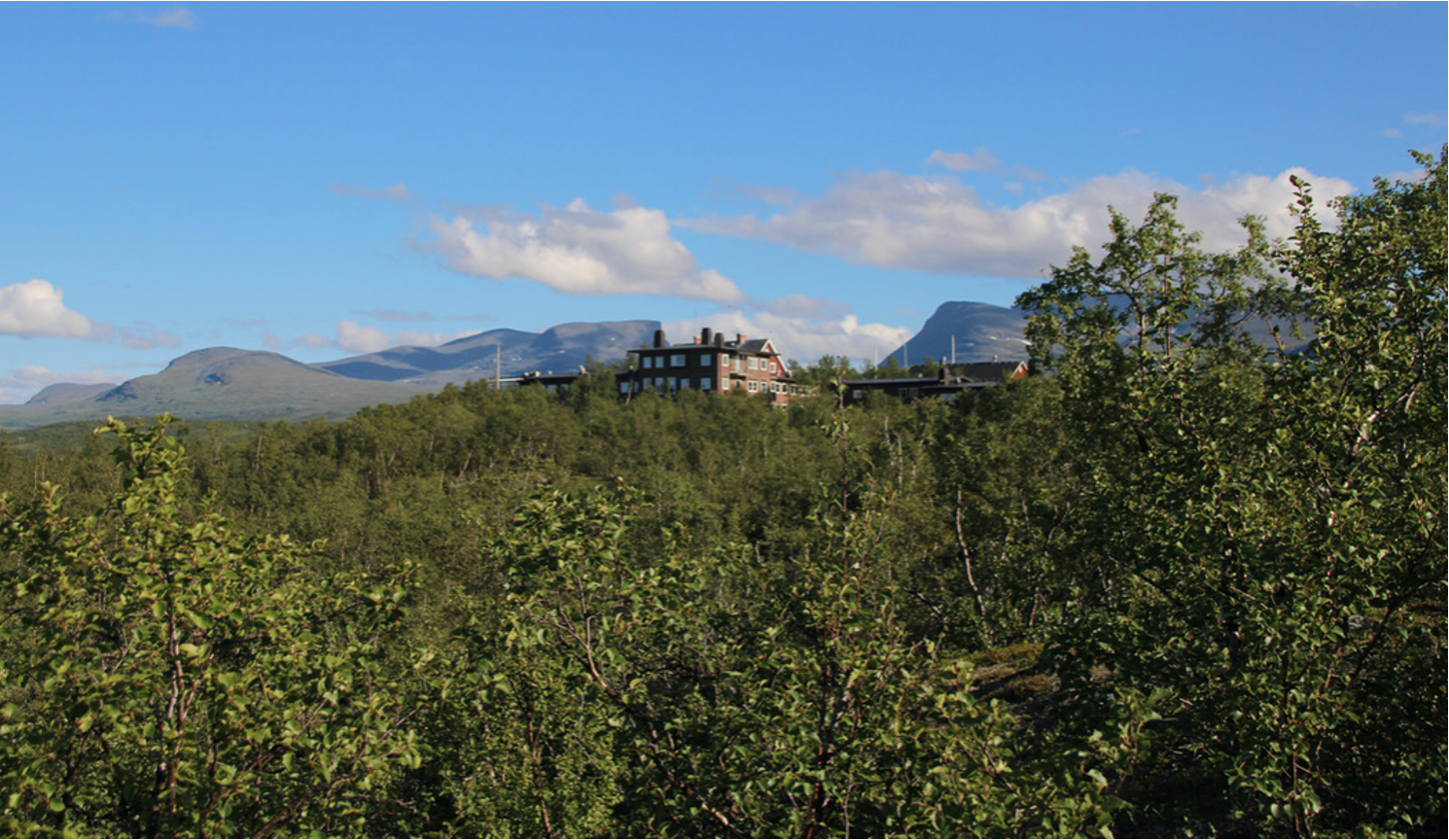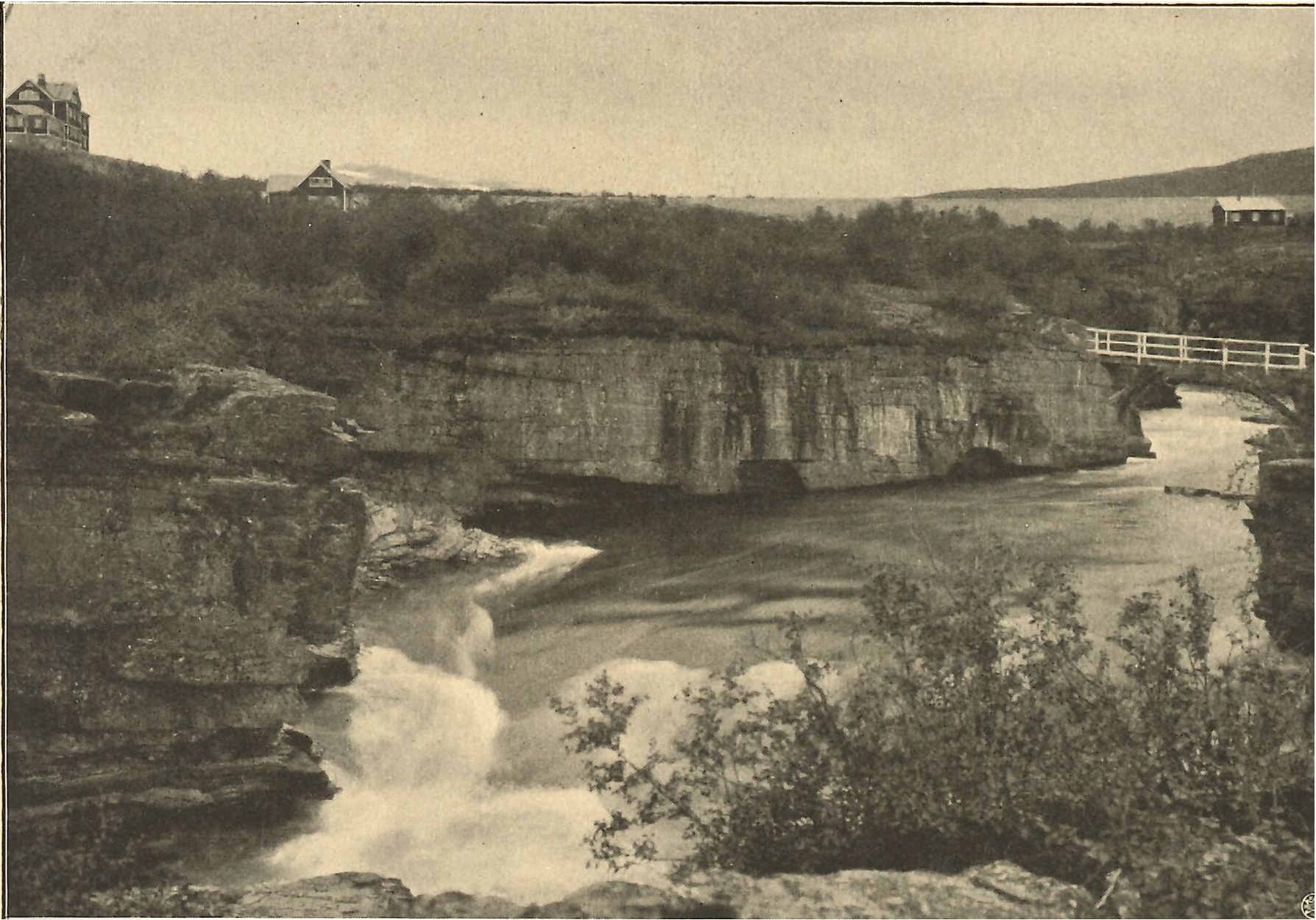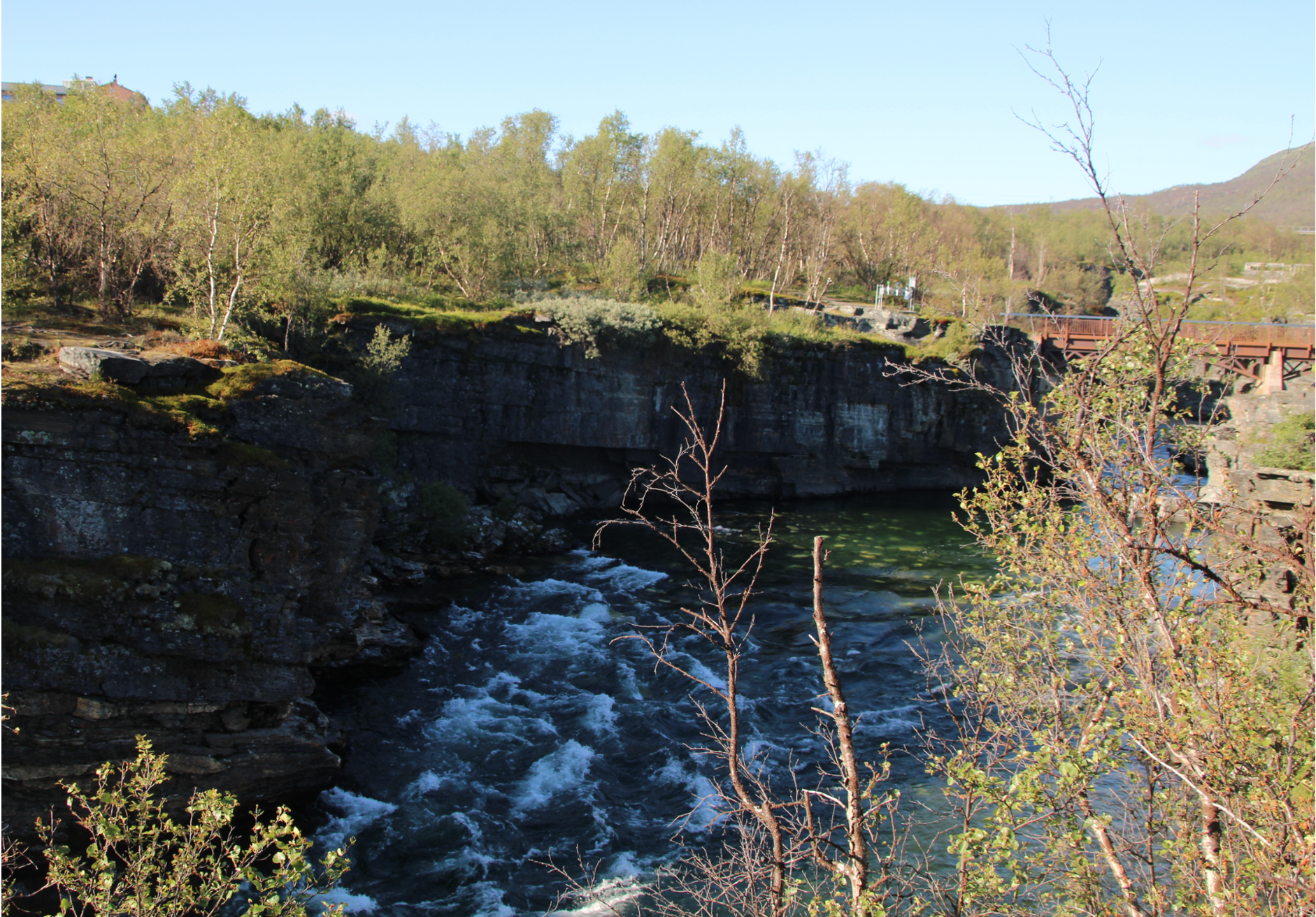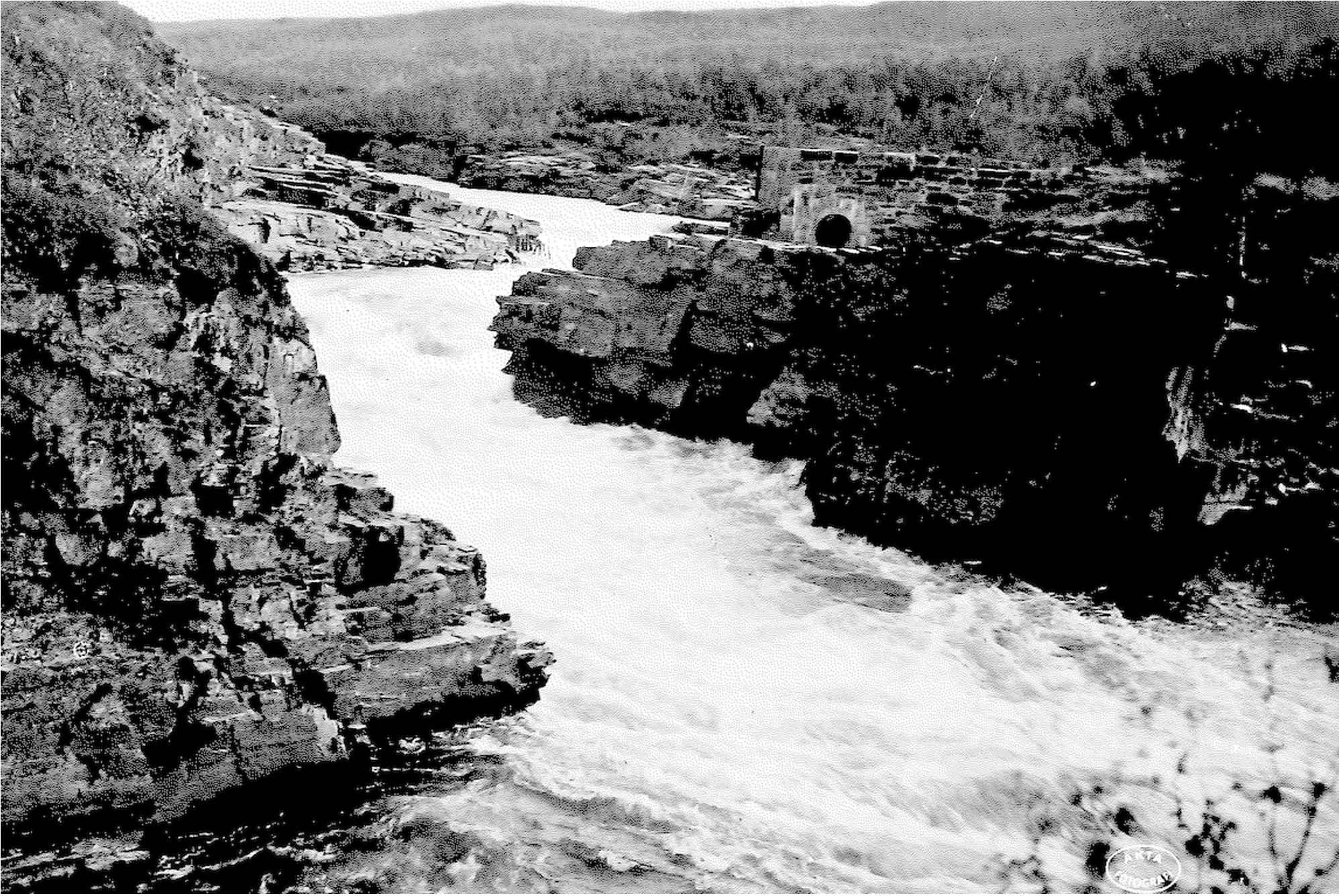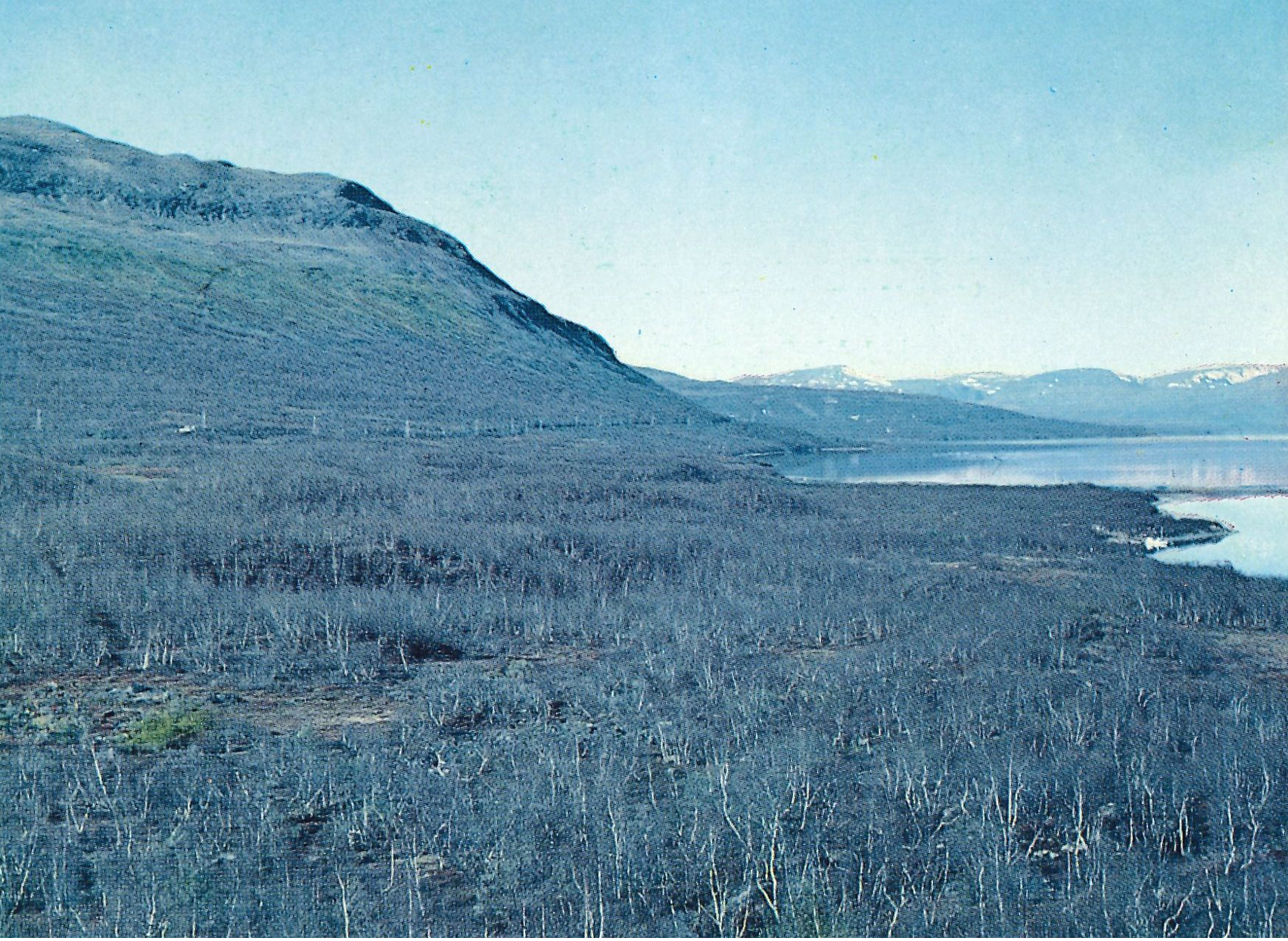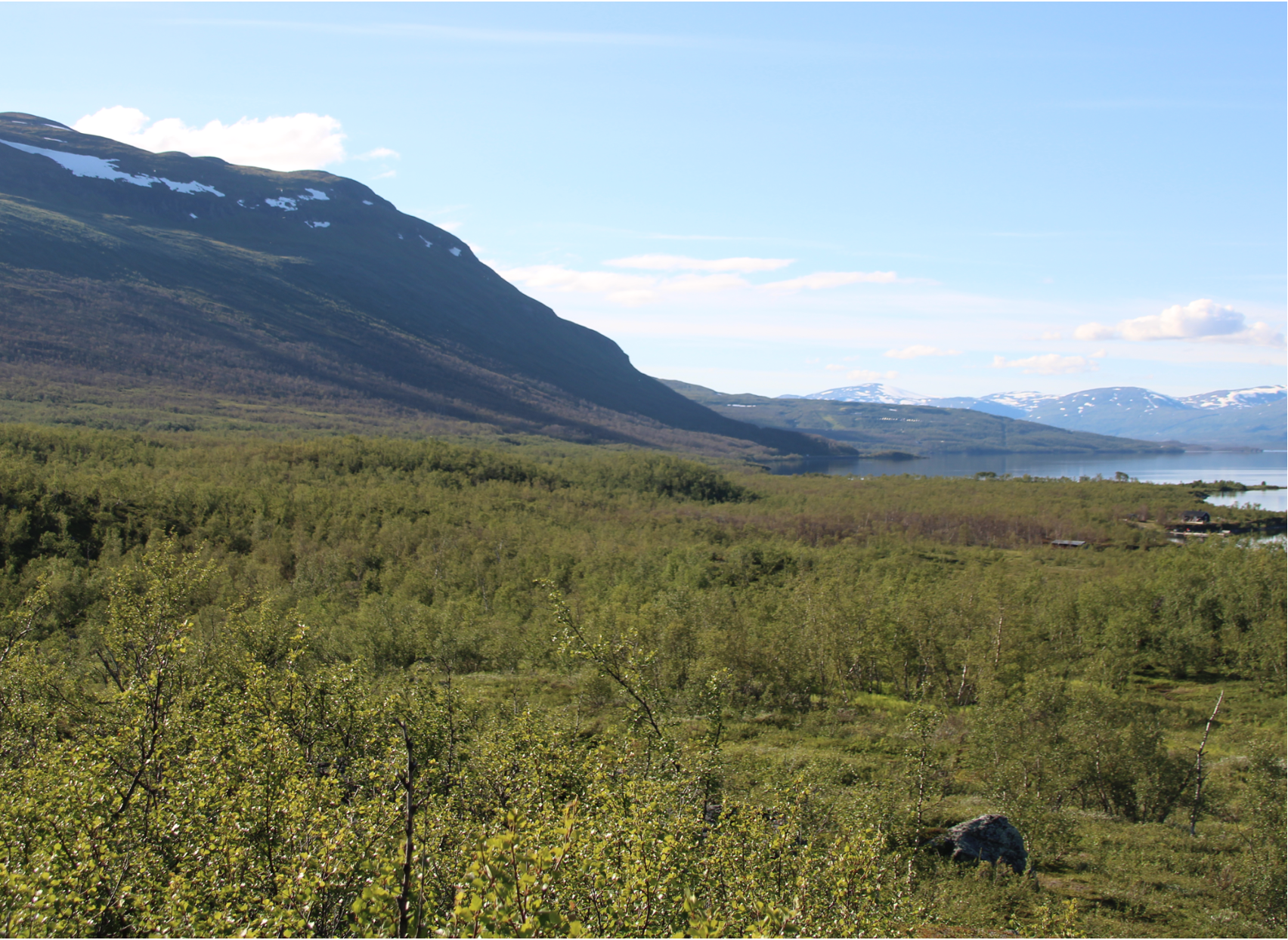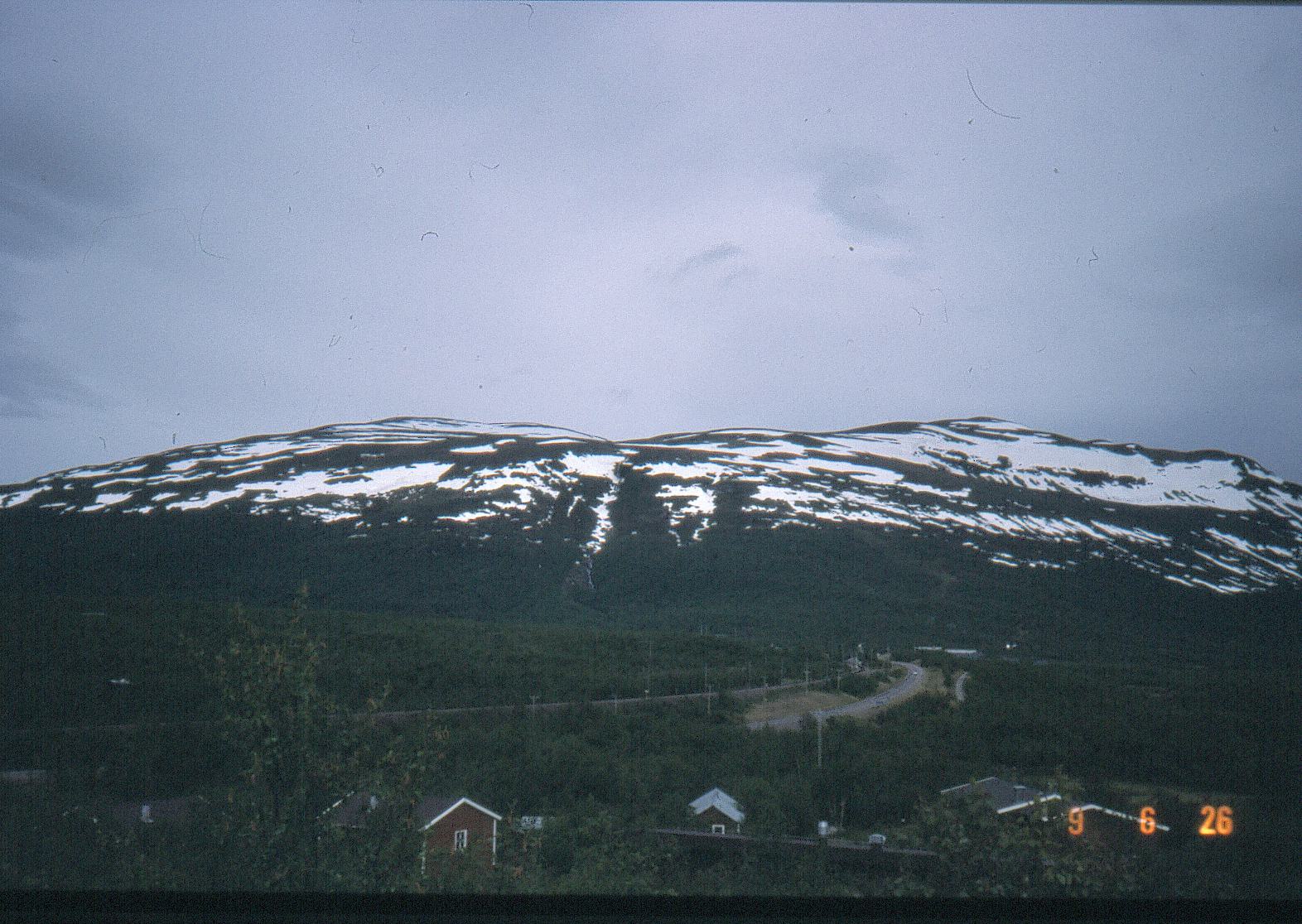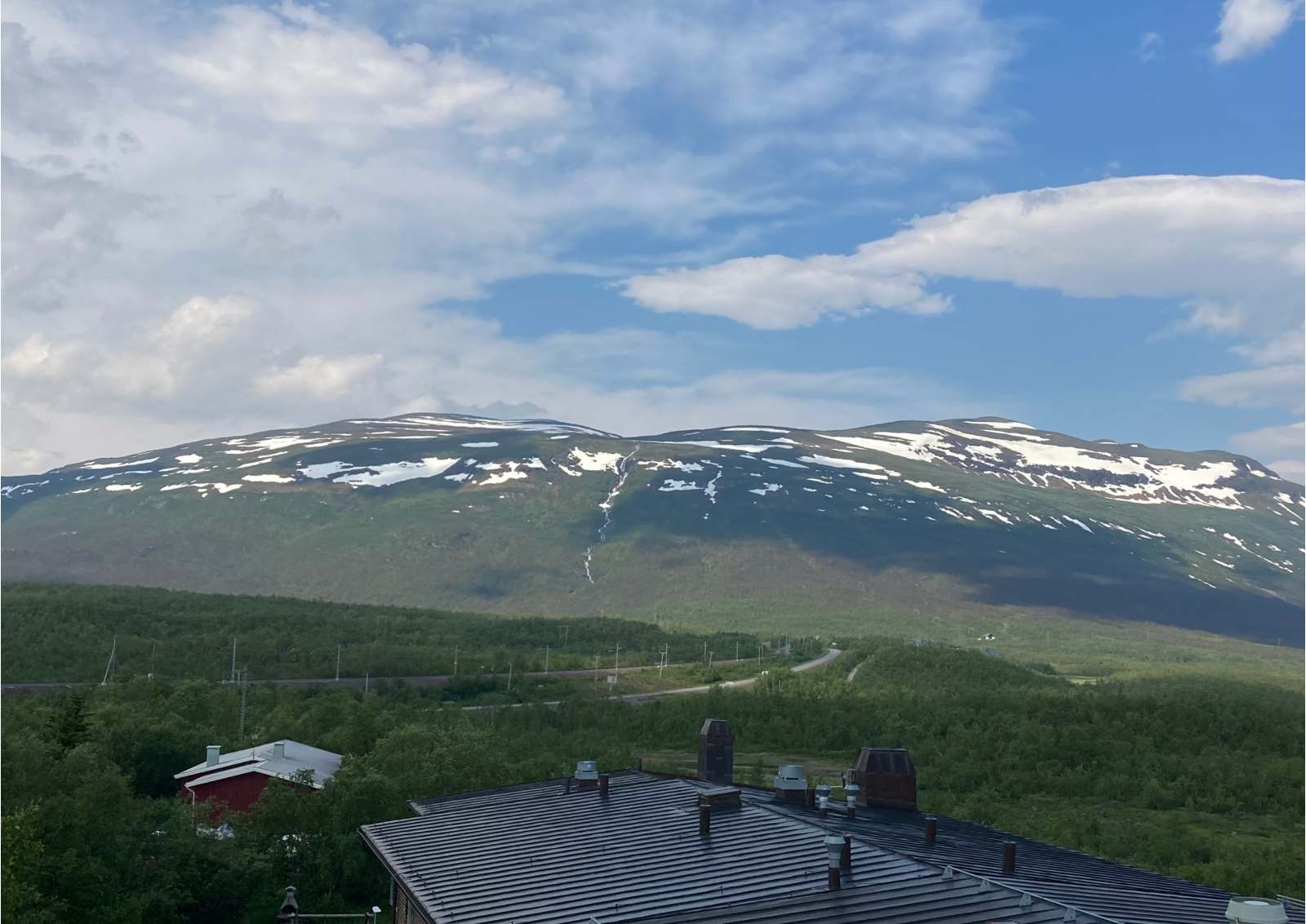A Century of Change in Abisko
Abisko has hosted over a century of well-documented tourism and scientific research. While early visitors and scientists weren’t necessarily aware of their impact on the natural environment, their diligent documentation of the Scandinavian landscape has been a valuable resource for our modern understanding of ecological change. The photographs below were taken in either the early 20th century or within the past 5 years. Use the slider bars to compare metrics of climate change over the past century, including treeline, vegetation density, precipitation, and more!
The treeline (or forest limit) marks the elevation or latitude where forest habitats transition to tundra, alpine or fell. The position of the treeline is determined by factors that limit trees including the coldest winter temperatures, extreme snowpacks, and pressure from herbivores such as reindeer. As our winters become warmer, tree species are able to grow at higher altitudes and latitudes. In the past century, Abisko treelines have moved approximately 230 meters upslope or about 40 meters in elevation.
While certain aspects of the landscape (such as snowfall) vary dramatically year-to-year and therefore don’t always reflect the long-term impacts of climate change, treelines persist with fair consistency over longer time periods. Therefore, they can serve as an easily trackable indicator of our rapidly changing climate. Photographs are an excellent way to visualize changes in the treeline over time, and also allow us to visualize other human impacts such as clearings for ski runs.
Climate change is a clear marker of humanity’s impact on the arctic, but these ecosystems are also directly affected by the presence of humans in the area - tourism, infrastructure, and general human traffic. Treeline advance is hindered by grazing animals such as reindeer - unfortunately, infrastructure and human presence tend to repel these charismatic herbivores, contributing to rapid treeline advance. This is just one example of the many ways in which direct human impacts can accelerate the ecological shifts caused by climate change.
It’s not just trees that are able to move upslope - many shrubs, flowering plants, and other plant types are affected in a similar manner. Certain species, such as the common Trollius europaeus shown in the above photographs, are now found at higher altitudes than there were during the early 20th century. While they may remain prevalent within their previous range boundaries, they now share these altitudes with shrubs such as various species of Salix (as visible in the photographs below).
In addition to moving upslope and northwards in latitude, foliage faced with rising annual temperatures shows an increase in both height and density. While treeline advance is dependent on winter warming (as elevation restrictions reflect annual temperature lows), foliage height and density is related to increases in spring and summer temperatures. These increases are thought to apply to trees, shrubs, and grasses, but not to other non-vascular species such as mosses. The relative prevalence of specific plant types is also modulated by local factors, such as permafrost presence and ground wetness.
Changes in precipitation and temperature patterns also affect the water cycle. Across much of the arctic, river discharge is anticipated to increase in coming years. However, many other local factors come into play, so this may not be the case everywhere in the arctic. Additionally, day-to-day river discharge is entirely dependent on local weather, such as the amount of snow melt and rainfall within a very short period of time. Therefore, the images shown here likely reflect the immediate weather conditions around the day that they were taken, rather than the long-term differences in hydrology that are attributable to climate change.
When examining the treeline photographs, you will notice that the 2022 treelines appear leafless and barren. This is due to an outbreak of herbivorous moth larvae that feed on birch leaves. Two species are present in the Abisko area, Operophtera brumata (winter moth) and Epirrita autumnata (autumnal moth), each of which rises to prevalence about once every decade. The relative success of these two species during any given outbreak determines the extent of the damage caused to local birch trees. Unfortunately, there is evidence that the geographical range of both species is increasing along with rising global temperatures, as these insects are limited by cold tolerance. Both species have advanced northwards, with O. brumata encroaching on territory formerly occupied only by E. autumnata. This overlap has the potential to severely worsen local outbreaks.



